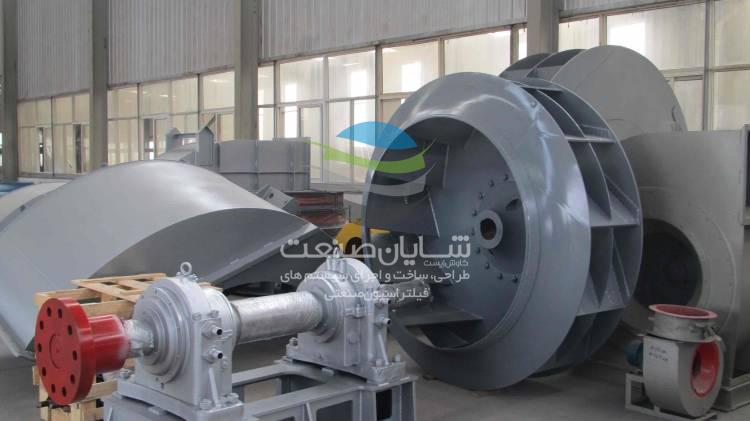Centrifugal and axial fan
Important points for choosing different types of centrifugal and axial fans:
In general, centrifugal and axial fans are used for air evacuation, air circulation and ventilation in workshops and industrial kitchens, poultry farms, industrial greenhouses, kitchens and toilets of residential buildings, etc.
It should be noted that an axial fan or a window with a larger volume of air displacement than centrifugal fans but without the possibility of air flow in the channel (without static pressure) is used.
Centrifugal or cylindrical fans are used to supply air pressure to the air ducts, but have a lower air displacement capacity than the axial fan.
Centrifugal and axial fan
Only air blowers or centrifugal fans can be used when venting through the duct.
Static and dynamic balance of fans and precise assembly of blade angles in all types of axial and centrifugal fans (forward and backward) are the most determining factors in the correct operation of fans.
Centrifugal fans are used at high pressures in many air conditioners to provide comfort conditions due to their quietness and good performance.
The centrifugal fan with forward-forward blades has maximum efficiency at low speeds, low capacities and high static pressures. Forward centrifugal fans are used in low pressure ventilation heating systems and air conditioners (home air conditioners to hot air heaters) with an efficiency of 55 to 65%.
Backward centrifugal fans are used in ventilation, air conditioning, heating and industrial systems in air environments that have mechanical or chemical corrosion and have a maximum efficiency of 80%.
Centrifugal and axial fan
Performance centrifugal fans based on two factors: the
centrifugal force (that’s why this fan to fan centrifuges known)
deflection air currents by the blades of a fan of radial form towards the exit fan, so that the angle between the entry and exit of molecules The air is 90 degrees. Centrifugal fans are used for low aeration volume (compared to axial fans with similar power) and high static pressure.
Principles of operation of the axial fan (propeller): The operation of the axial fan is based on the forced movement of air according to the angle of the blades, in which the air flow is essentially parallel to the impeller axis. Impeller fans are used for large volumes of air and low static pressure.
How to choose and order a fan:
Type of fan (centrifugal or axial)
Air displacement capacity (cfm or m3 / hr)
Static fan pressure (for forward or backward centrifugal fans)
Single-phase or three-phase electric motor
Dimensions and material of fan blades (especially in Dimensions of axial or window fans)
In the implementation of air handling systems, the following should be considered:
Humidity of the installation site,
acidic or alkaline,
explosion-proof air and anti-spark electromotor,
air temperature, the items mentioned in the order of the device and implementation of important ventilation systems Is considered. Therefore, it will be delivered according to the order of the desired device.
Centrifugal and axial fan
Usually, to select a centrifuge fan, first by multiplying the length * width * height * number of times of air change in the desired place (based on the type of operation and use of that place from Table 3-14 of the above air conditioning standards), the volume of replaceable air is calculated. Then, based on the speed of 1500 to 2000 feet per minute (FPM) for the passage of exhaust air (exast) through the duct, the dimensions of the required air outlet channel are calculated from the tables and the dimensions of the air ducts or detector are calculated. Now based on the calculated air volume, the dimensions of the duct obtained, the length of the duct path, the possible elbows in the air passage duct and…. The amount of pressure drop or static pressure of the centrifuge fan is obtained and from there we also calculate the power of the electromotor connected to this fan.
Due to the importance of balancing in the operation of centrifugal and axial fans and its direct relationship with the life of the fan and electromotor, in order to maintain the dynamic balance of the fans, pay utmost attention to the fully horizontal and balanced installation of centrifugal and axial fans in your installation site.

